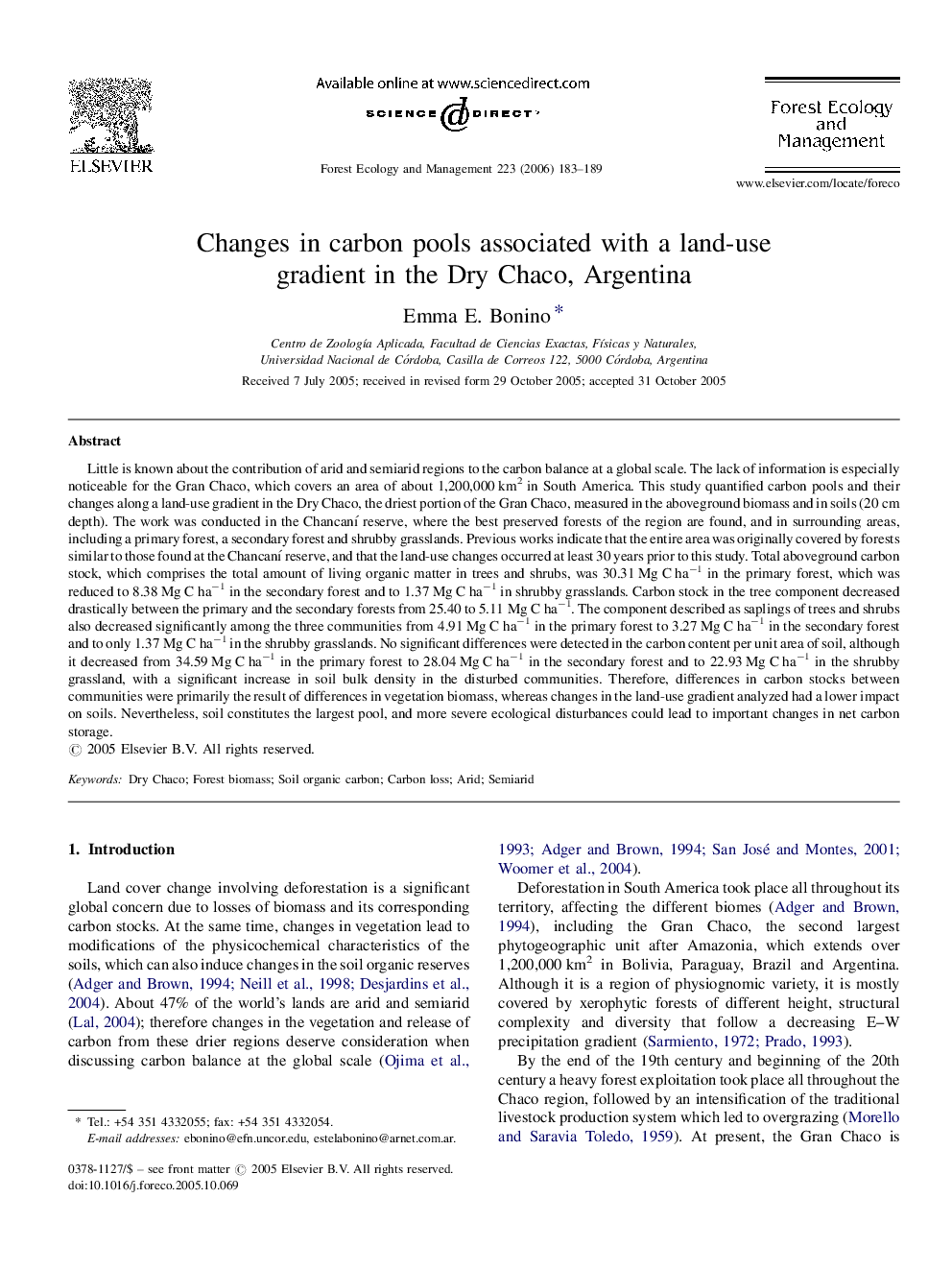| Article ID | Journal | Published Year | Pages | File Type |
|---|---|---|---|---|
| 90586 | Forest Ecology and Management | 2006 | 7 Pages |
Little is known about the contribution of arid and semiarid regions to the carbon balance at a global scale. The lack of information is especially noticeable for the Gran Chaco, which covers an area of about 1,200,000 km2 in South America. This study quantified carbon pools and their changes along a land-use gradient in the Dry Chaco, the driest portion of the Gran Chaco, measured in the aboveground biomass and in soils (20 cm depth). The work was conducted in the Chancaní reserve, where the best preserved forests of the region are found, and in surrounding areas, including a primary forest, a secondary forest and shrubby grasslands. Previous works indicate that the entire area was originally covered by forests similar to those found at the Chancaní reserve, and that the land-use changes occurred at least 30 years prior to this study. Total aboveground carbon stock, which comprises the total amount of living organic matter in trees and shrubs, was 30.31 Mg C ha−1 in the primary forest, which was reduced to 8.38 Mg C ha−1 in the secondary forest and to 1.37 Mg C ha−1 in shrubby grasslands. Carbon stock in the tree component decreased drastically between the primary and the secondary forests from 25.40 to 5.11 Mg C ha−1. The component described as saplings of trees and shrubs also decreased significantly among the three communities from 4.91 Mg C ha−1 in the primary forest to 3.27 Mg C ha−1 in the secondary forest and to only 1.37 Mg C ha−1 in the shrubby grasslands. No significant differences were detected in the carbon content per unit area of soil, although it decreased from 34.59 Mg C ha−1 in the primary forest to 28.04 Mg C ha−1 in the secondary forest and to 22.93 Mg C ha−1 in the shrubby grassland, with a significant increase in soil bulk density in the disturbed communities. Therefore, differences in carbon stocks between communities were primarily the result of differences in vegetation biomass, whereas changes in the land-use gradient analyzed had a lower impact on soils. Nevertheless, soil constitutes the largest pool, and more severe ecological disturbances could lead to important changes in net carbon storage.
